
Destination
16:22, 27-Mar-2019
A journey along the Chinese border – Kashgar
Zhu Mei
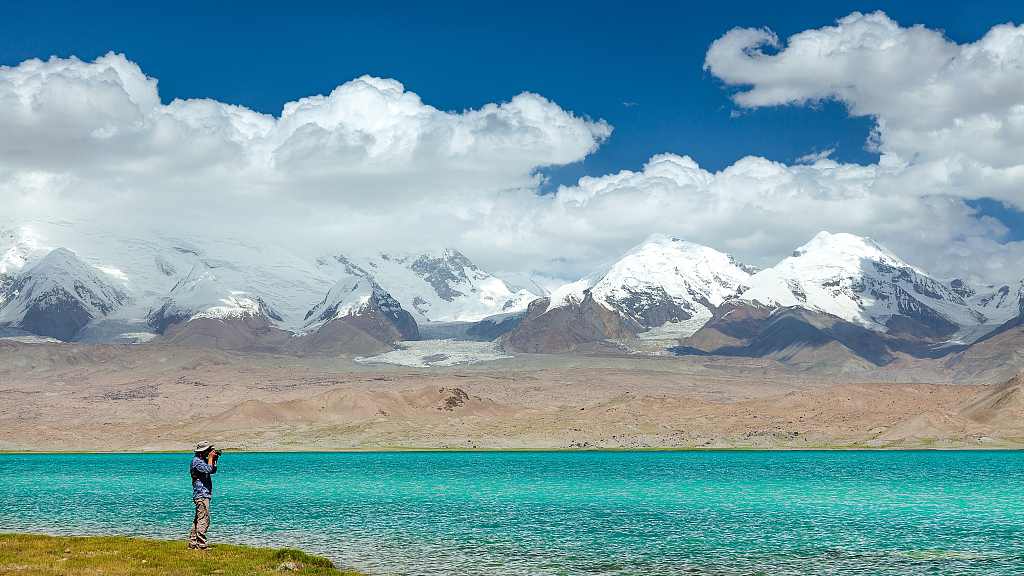
China has the longest land border in the world totaling more than 22,000 kilometers. Many of the border towns are diverse and share both Chinese and foreign characteristics. CGTN has collected 10 beautiful border cities and towns in China for tourists.
This time, let's visit another city in the Xinjiang Uygur Autonomous Region – Kashgar, which is a western gateway in China that borders Tajikistan, Afghanistan and Pakistan. Kashgar has been an important trading center on the ancient Silk Road and is now a multi-ethnic region.
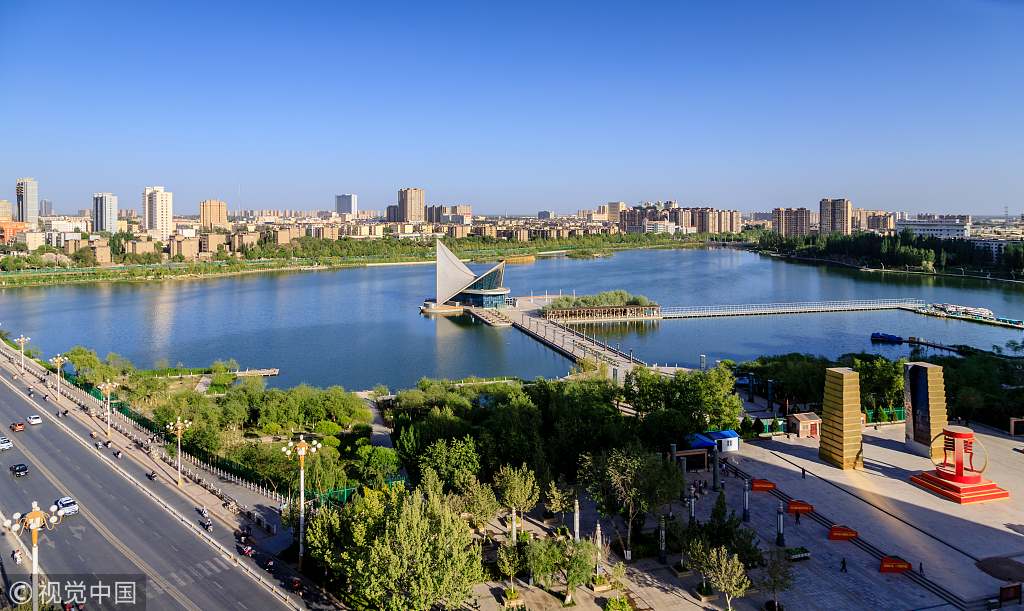
Kashgar City in northwest China's Xinjiang Uygur Autonomous Region. /VCG Photo
Kashgar City in northwest China's Xinjiang Uygur Autonomous Region. /VCG Photo
Kashgar Old Town
The soul of Kashgar lies in the Kashgar Old Town which has a history of more than 2,000 years. Located in downtown Kashgar, the old town covers an area of 4.25 square kilometers.
It is a unique maze city with over 200 narrow alleys. If you get lost, the hexagonal bricks under your feet will lead you out of the old town. But if you walk along the bricks with four corners, you will walk into a blind alley.
Most of the buildings here are a combination of Islamic and Uygur styles. The houses in the core area are the world's largest adobe complexes.
Tourists can get a lot of information from the doors of the local houses. If two doors are open, it represents that the male host is at home. If only one door is open, it means only the hostess is at home. And if a curtain is hung over the front door, it means a guest is visiting this family now.
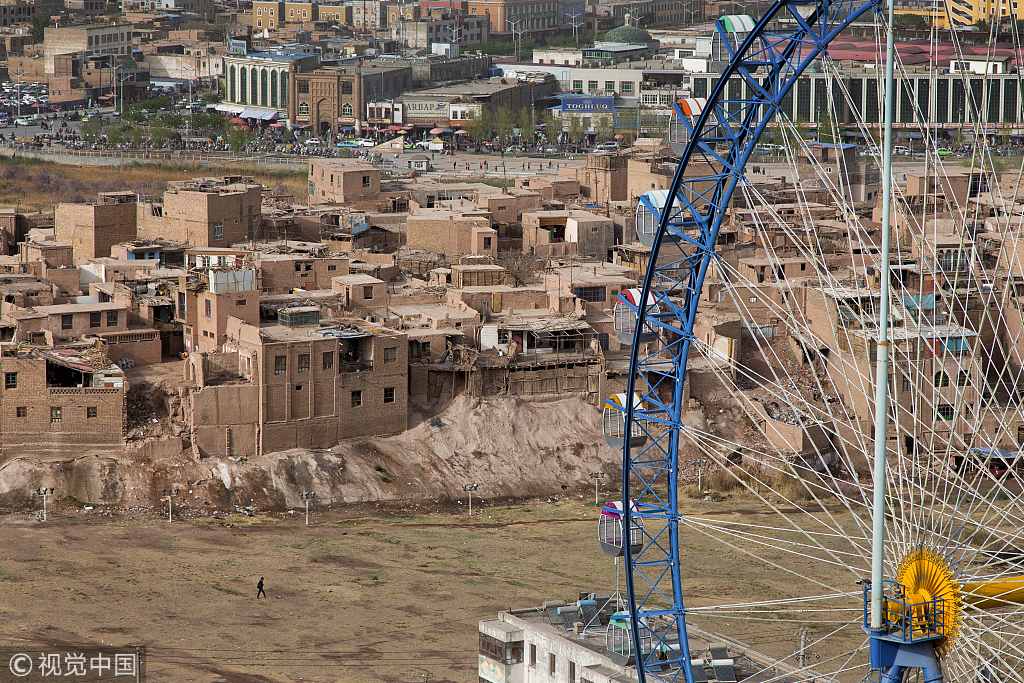
Kashgar Old Town in Kashgar City. /VCG Photo
Kashgar Old Town in Kashgar City. /VCG Photo
Tips:
Entrance fee: 30 yuan (4.47 U.S. dollars)
Note: There are many entrances to the old town, some of which do not require a ticket.
Transportation: Buses No. 2, 7, 22 and 28
Id Kah Mosque
“Id Kah” means “a place of praying and celebrating in festivals.” The Id Kah Mosque is the largest mosque in China, covering 16,800 square meters. The mosque was built in 1442 and is located in the central square in Kashgar.
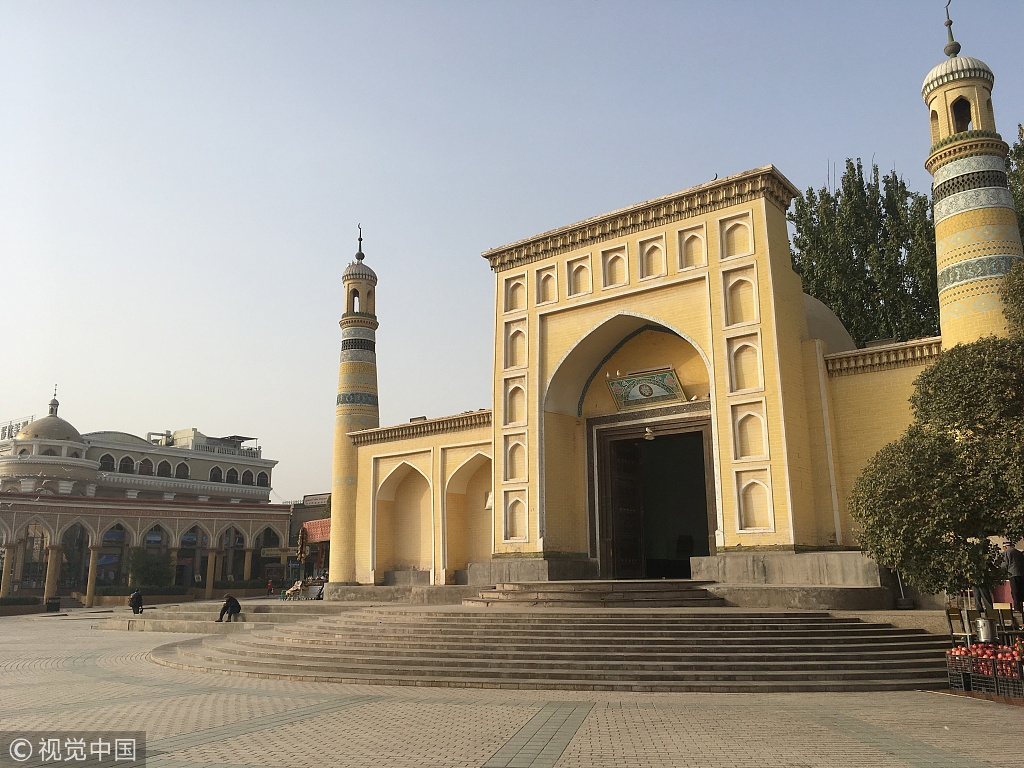
Id kah Mosque in Kashgar. /VCG Photo
Id kah Mosque in Kashgar. /VCG Photo
Once a cemetery, the Id Kah Mosque consists of a courtyard, a hall of prayer, a gate tower and other structures.
Muslims worship five times a day. There are usually 2,000 or 3,000 Muslims worshiping here, and during festivals, as many as 20,000 to 30,000.
There are some religious customs that you should pay attention to. Never stand in front of a Muslim when they worship, because they are facing the direction of the holy city of Mecca in the west.
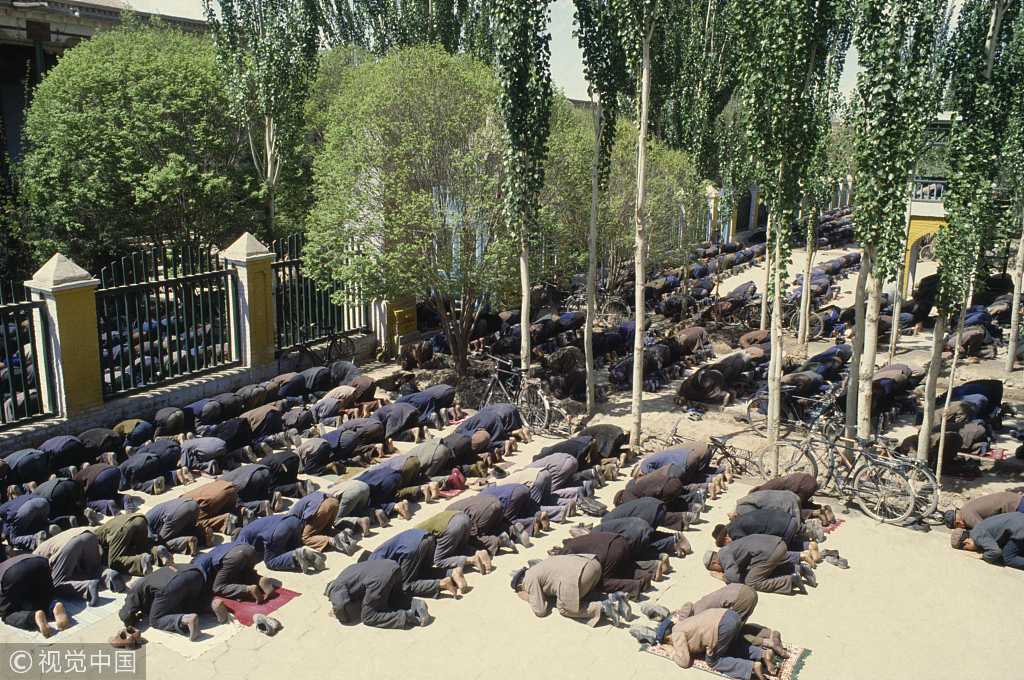
Worshiping at Id Kah Mosque. /VCG Photo
Worshiping at Id Kah Mosque. /VCG Photo
Tips:
Entrance fee: 20 yuan (3 U.S. dollars)
Opening time: 10:00 a.m.-8:00 p.m. (The mosque closes during worship time.)
Transportation: Buses No. 2, 7, 8, 13, 22 and 28
Karakuri Lake
Karakuri Lake lies about 200 kilometers from Kashgar City, at the foot of Mt. Muztagata. At an altitude of 3,600 meters, it is the highest lake on the Pamir Plateau. The lake is 30 meters deep and covers an area of 10 square kilometers.
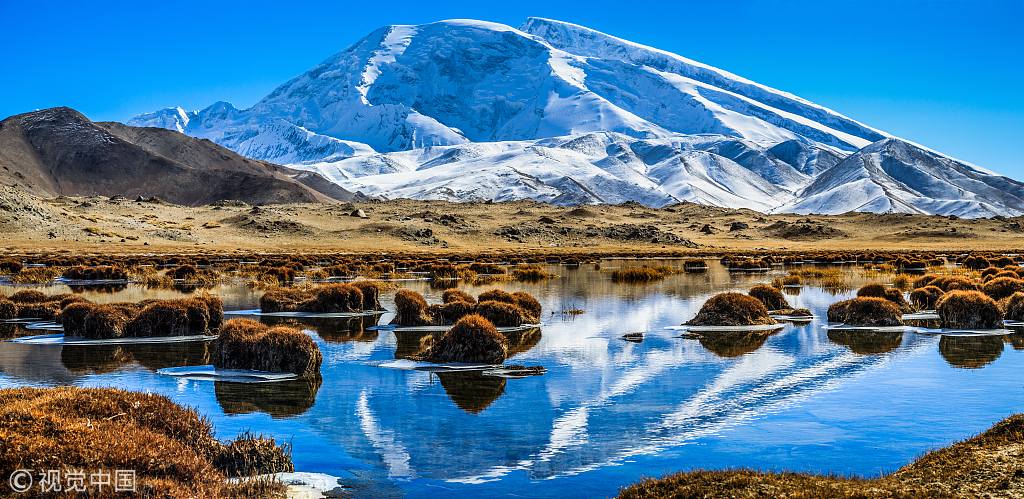
Karakuri Lake. /VCG Photo
Karakuri Lake. /VCG Photo
“Karakuri” means “black sea” in the local language as the lake looks dark when the sun is blocked by the clouds. Surrounded by mountains, the lake is an ideal mountaineering camp for professional mountain climbers.
Tips:
Entrance fee: 50 yuan (7.45 U.S. dollars)
Best visiting time: August-September
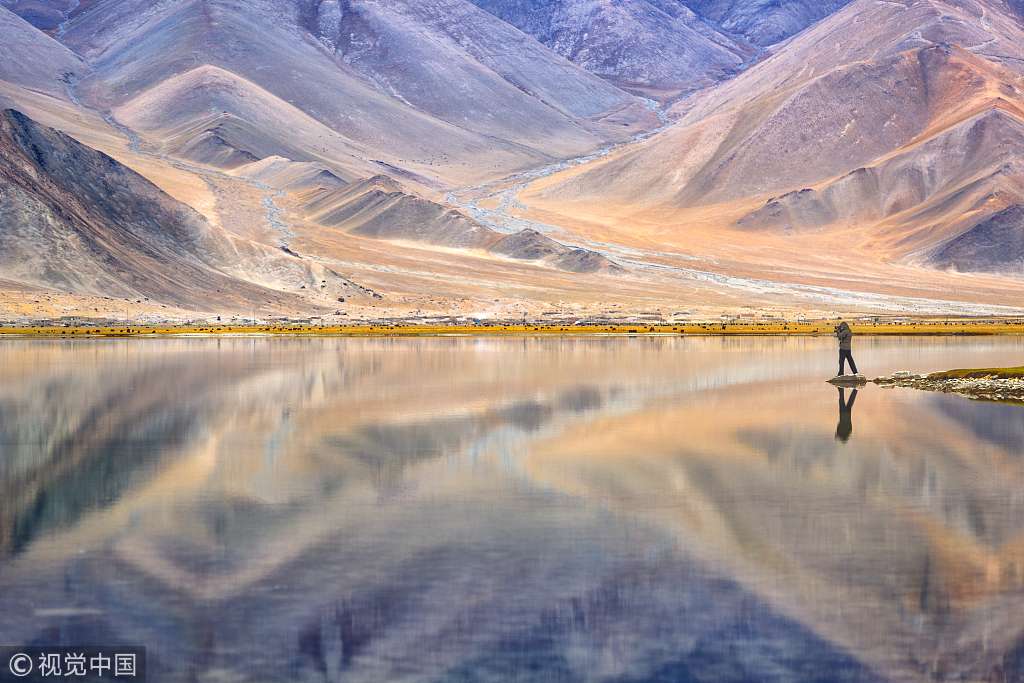
Karakuri Lake. /VCG Photo
Karakuri Lake. /VCG Photo
Food
During your stay in Kashgar, don't miss the typical food: Shashlicks, roast steamed buns, roast lamb, and "nang", a kind of crispy pancake.
(Cover: Karakuri Lake in Kashgar, northwest China's Xinjiang Uygur Autonomous Region. /VCG Photo)
3433km

SITEMAP
Copyright © 2018 CGTN. Beijing ICP prepared NO.16065310-3
Copyright © 2018 CGTN. Beijing ICP prepared NO.16065310-3